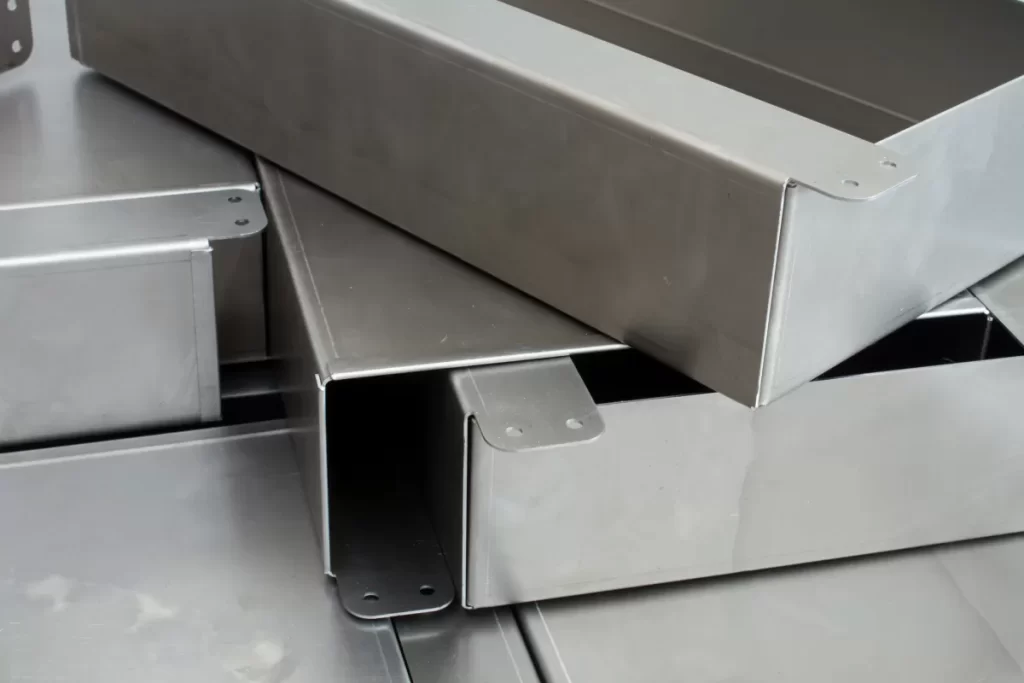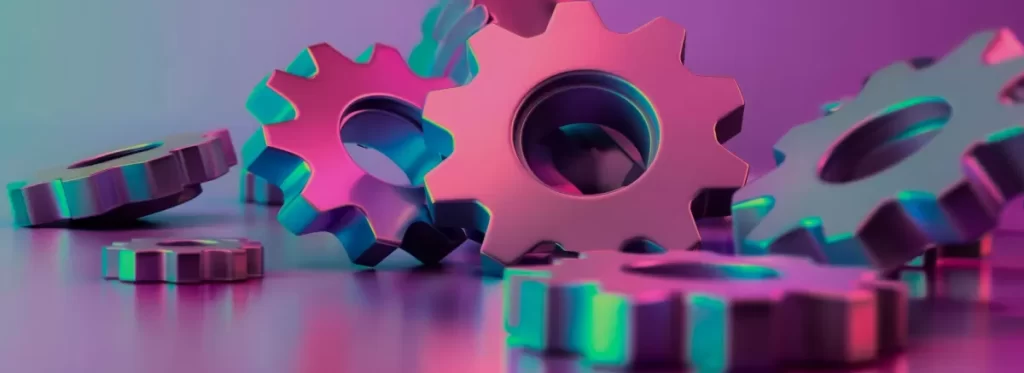Struggling to design small-scale applications that balance precision and cost? Creating compact, high-performance parts for CNC machining can be a game-changer for hobbyists, startups, and engineers alike. At HYCNC, we’ve helped countless creators turn small-scale CNC designs into reality with expert precision machining tips. In this guide, you’ll uncover practical design advice for small-scale applications, from material selection to cost-saving tricks, backed by our real-world CNC expertise. Ready to craft smarter, more efficient designs? Let’s dive in!
Understanding Small-Scale Applications
When we talk about small-scale applications, we mean projects or products that are compact, often intricate, and produced in limited quantities. These can range from small mechanical parts and prototypes to custom components used in electronics, medical devices, or robotics. Generally, a small-scale application involves parts that are measured in inches or centimeters, require precision, and often have tight tolerances.
Common industries relying on small-scale CNC design include:
- Medical technology – surgical tools, implants
- Electronics – housings, connectors
- Robotics – micro-actuators, sensor mounts
- Aerospace – small brackets or fittings
- Custom consumer products – personalized gadgets or accessories
Small-scale applications often face challenges such as strict dimensional accuracy, delicate material handling, and the need for quick turnaround times. Traditional manufacturing methods can struggle to meet these demands efficiently.
This is where CNC machining shines. CNC machining is ideal for small-scale applications because it offers:
- High precision – essential for tight tolerances and tiny features
- Flexibility – easy to adapt designs without major tooling changes
- Minimal setup time – perfect for small batches or prototypes
- Repeatability – consistent results for small runs or multiple iterations
By leveraging CNC technology, you can bring complex small-scale designs to life faster and with a higher degree of accuracy, making it a go-to choice for industries that demand compact, reliable parts.
Key Design Principles for Small-Scale Applications
When designing for small-scale CNC projects, keeping things simple is key. Here’s what I focus on to make sure the design works smoothly and looks great:
Minimize Complexity
- Avoid overly intricate shapes that can be hard to machine accurately.
- Simplify parts to reduce machining time and keep costs down.
Optimize for Tolerances
- Small parts need tight tolerances to fit together perfectly.
- Design with realistic tolerance ranges to prevent assembly issues without driving up cost.
Modular Design
- Break your project into smaller, standardized modules.
- This approach makes fabrication easier and helps with repairs or upgrades later on.
Functional Aesthetics
- Balance how parts look with how they work.
- Make sure the design supports the function without unnecessary decoration.
3D Assembly Techniques
- Design parts that snap or lock together for easy assembly.
- Consider interlocking features that don’t require extra fasteners or adhesives.
Following these design principles helps you get precise, reliable parts that are perfect for small-scale CNC machining projects.
Material Selection for Small-Scale CNC Projects
Choosing the right material is crucial when working on small-scale CNC projects. You want something lightweight but still strong enough to handle the job. Materials like aluminum and certain plastics often hit that sweet spot between durability and ease of machining.
Here’s what to keep in mind:
- Lightweight high-strength materials: Aluminum alloys, Delrin, and nylon are popular for small parts because they offer good strength without adding bulk.
- Balancing cost and performance: While metals like titanium are strong, they’re expensive and harder to machine. Plastics may be cheaper but might not handle stress as well. It’s important to find the right balance based on your application.
- Considerations for machining: Some materials machine faster and cleaner, which lowers costs and turnaround time. Avoid overly brittle or flexible materials that can cause issues during cutting.
At HYCNC, we offer a wide range of materials tailored for small-scale CNC projects. From standard aluminum grades to engineering plastics, we guide you to select the best option for your design and budget. This support helps you save time and avoid costly mistakes during production.
Best Practices for CNC-Compatible Designs
When it comes to small-scale CNC design, keeping your project CNC-compatible is key to smooth manufacturing and great results. Here are some best practices to keep in mind:
-
Design for manufacturability
Make sure your design fits what CNC machines can realistically handle. Avoid overly complex shapes or tiny details that could be hard to cut accurately.
-
Use precise measurements
Small-scale CNC applications demand tight tolerances. Use accurate dimensions from the start to prevent costly errors later.
-
Incorporate error margins
Always build in slight allowances for material expansion, tool wear, and machine variability. This gives you a buffer to maintain fit and function.
-
Test designs virtually
Use CAD or CAM software to simulate your design before machining. This catches potential problems early, saving time and material.
-
Example of interlocking parts
When designing parts that fit together, like interlocking components, ensure clearance is enough for a clean fit without wobble. For instance, a 0.1 mm gap often works well for CNC small parts.
Following these tips helps your small-scale CNC project run smoothly, cuts down on mistakes, and improves the final outcome.
Cost Saving Tips for Small Scale CNC Projects
Keeping costs low is key when working on small scale CNC design. Here are some practical ways to save without sacrificing quality:
-
Minimize Material Waste
Plan your cuts carefully to use as much material as possible. Nest parts tightly and consider leftover pieces for future projects.
-
Choose Standard Tooling
Using common cutting tools keeps costs down because specialty tools add extra charges and lead times.
-
Batch Small Runs
Running multiple parts together lowers setup costs. Even with small orders, grouping them can improve efficiency and reduce your price per piece.
-
Leverage HYCNC’s Instant Pricing Tool
Use HYCNC’s online pricing platform to get quick quotes and tweak designs or quantities to find the sweet spot between cost and specs.
By focusing on these strategies, you’ll make your small scale CNC machining projects more budget-friendly and streamlined.
Common Mistakes to Avoid in Small-Scale CNC Design
When working on small-scale CNC design, avoiding certain pitfalls can save you time and money. Here are some common mistakes I see that you should watch out for:
Overcomplicating Designs
It’s tempting to add a lot of features, but complex parts increase machining time and cost. Keep your design simple and focused. Complexity often leads to errors and machining delays.
Ignoring Material Properties
Different materials behave differently when machined. Overlooking hardness, flexibility, and thermal expansion can cause parts to fail or not fit properly. Always consider how your chosen material performs in CNC machining.
Neglecting Assembly
Designing parts without thinking about how they will fit or assemble together is a big mistake. Make sure your designs allow easy assembly with proper clearances, especially when dealing with tight tolerances in small components.
Skipping Prototyping
Don’t skip making prototypes or test runs. Prototyping helps catch design flaws early, saving money before full production. Use virtual testing or small batch runs to validate your design and spot issues.
By keeping an eye on these common errors, you can create better small-scale CNC designs that run smoothly and cost less.
Case Study Successful Small-Scale CNC Design
One of HYCNC’s recent small-scale CNC projects involved designing precision components for a startup specializing in compact robotics. The client needed small, highly detailed parts that required tight tolerances and efficient assembly. Their main challenge was balancing intricate design features with the constraints of small-scale manufacturing.
HYCNC worked closely with the team to simplify the design, opting for modular parts that could be easily assembled without sacrificing functionality. We recommended lightweight, high-strength materials to keep the parts durable yet easy to machine. Using advanced 3D assembly techniques ensured all components fit perfectly on the first try.
The results were impressive—production times dropped by 30%, costs were reduced thanks to minimized material waste, and the final parts met exact tolerances. This successful partnership highlights how smart design combined with HYCNC’s precision machining can bring small-scale CNC projects to life efficiently and affordably.
How HYCNC Supports Small-Scale Application Design
HYCNC offers a full range of CNC services tailored specifically for small-scale CNC design projects. Whether you need precise machining for micro parts or help with compact application design, HYCNC has the tools and expertise to deliver quality results fast.
Partnering with HYCNC brings clear benefits:
- Reliable precision machining that meets tight tolerances needed for small parts
- Material options suitable for lightweight and high-strength requirements
- Quick turnaround times to keep your projects on schedule
- Instant pricing tools so you can see cost estimates upfront
- Expert support to guide you through design adjustments and optimize manufacturability
If you’re working on a small-scale application and want a partner who understands the unique challenges, HYCNC is ready to help. Reach out today for a free quote or to discuss your project needs.
FAQs About Small-Scale CNC Design
What are the best materials for small-scale CNC applications?
For small parts, lightweight and high-strength materials work best. Common choices include aluminum, brass, and engineering plastics like Delrin or Nylon. These are easy to machine, durable, and cost-effective for small-scale projects.
How can I reduce costs on small-scale CNC projects?
- Minimize material waste by planning part layouts carefully
- Use standard tooling instead of custom tools
- Batch your orders, even in small runs, to benefit from setup efficiencies
- Use HYCNC’s instant pricing tool to compare options and keep costs in check
What tolerances should I design for in small-scale CNC machining?
Aim for tolerances around ±0.005 inches (±0.127 mm) for most small parts. If you need tighter specs, discuss this when ordering. HYCNC’s precision machining ensures your tolerances are met reliably.
How does HYCNC ensure precision in small-scale CNC projects?
HYCNC combines skilled machinists with advanced CNC equipment calibrated for accuracy. They also provide detailed quality checks and allow virtual testing of designs before production. This helps catch issues early and ensures top-notch results every time.




